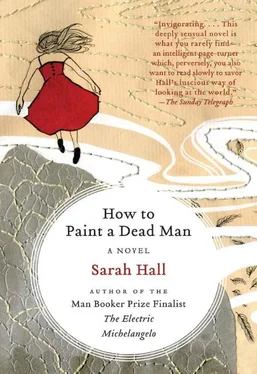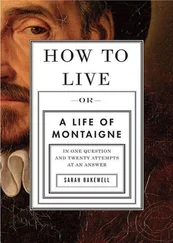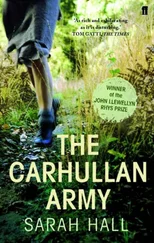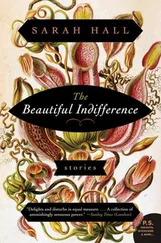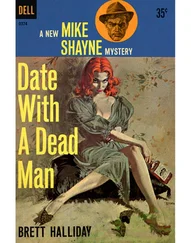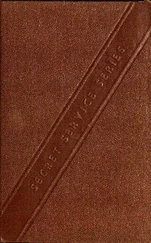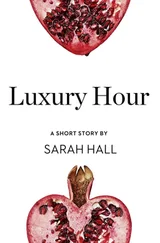Sarah Hall - How to Paint a Dead Man
Здесь есть возможность читать онлайн «Sarah Hall - How to Paint a Dead Man» весь текст электронной книги совершенно бесплатно (целиком полную версию без сокращений). В некоторых случаях можно слушать аудио, скачать через торрент в формате fb2 и присутствует краткое содержание. Год выпуска: 2009, Издательство: Harper Perennial, Жанр: Современная проза, на английском языке. Описание произведения, (предисловие) а так же отзывы посетителей доступны на портале библиотеки ЛибКат.
- Название:How to Paint a Dead Man
- Автор:
- Издательство:Harper Perennial
- Жанр:
- Год:2009
- ISBN:нет данных
- Рейтинг книги:4 / 5. Голосов: 1
-
Избранное:Добавить в избранное
- Отзывы:
-
Ваша оценка:
- 80
- 1
- 2
- 3
- 4
- 5
How to Paint a Dead Man: краткое содержание, описание и аннотация
Предлагаем к чтению аннотацию, описание, краткое содержание или предисловие (зависит от того, что написал сам автор книги «How to Paint a Dead Man»). Если вы не нашли необходимую информацию о книге — напишите в комментариях, мы постараемся отыскать её.
, Sarah Hall, "one of the most significant and exciting of Britain's young novelists" (
), delivers "a maddeningly enticing read... an amazing feat of literary engineering" (
).
How to Paint a Dead Man — читать онлайн бесплатно полную книгу (весь текст) целиком
Ниже представлен текст книги, разбитый по страницам. Система сохранения места последней прочитанной страницы, позволяет с удобством читать онлайн бесплатно книгу «How to Paint a Dead Man», без необходимости каждый раз заново искать на чём Вы остановились. Поставьте закладку, и сможете в любой момент перейти на страницу, на которой закончили чтение.
Интервал:
Закладка:
Something came over you, a different impulse. You shut the laptop, stood up, and went to the snug room at the back of the gallery where Tom was making notes on the texts. The door was closed. You didn’t knock. You opened it, and went inside. He was working as usual with the curtains drawn, in lamplight, bent over the documents on the table. You moved behind him, and stood there. Then you leaned over and kissed the back of his neck, just beneath his dark hairline. He made a soft-throated noise, and turned slightly. Perhaps he didn’t see that it was you, perhaps he didn’t smell your perfume. Perhaps he knew. But he did not recoil. Instead he reached up and held the back of your head so you wouldn’t pull away. Then he stood up and drew you to him. You felt a rush of chemical gold overwhelm you, like something taken intravenously.
There was only the humidity of your mouths as you kissed. The excitement passed between you on your tongues. He put a hand round your neck and pulled back. Where is she? She’s not here? You looked at his mouth, glazed from your own, his beautiful lips, with the tiny white scar on the membrane. He put a hand underneath your dress. Non voglio fermarmi.
You pushed him back on the desk, unzipped his trousers. He was hard, the skin smooth over the tightness. You kept him in your mouth even at the end when he tried to gain polite release before coming. It was easy. It was inexcusable.
Translated from the Bottle Journals
Much has been made of this studio of mine, which is also my bedroom. There is talk of rustication and asceticism, the robes of the profession. Really I am no monk. It is simply that I favour the light and the space in here and I need room to stretch the canvases. If I enjoy the company of a visitor, or Antonio wishes to see the recent productions, they are welcome inside. After all, it is not a closed sanctuary where rare species live, or shrouds are kept. It is simply a room of manufacture and of rest. Theresa is permitted to clean only the sleeping quarter, so a line of dust several decades thick now exists between my bed and the work area. My footprints of dust in the rest of the house are a constant source of irritation to her. But I can always be found for you to scold me, I say to her — you can trap me like a wolf sneaking in from the Balkans. We do not always see eye to eye, but Theresa has never attempted to clean further into the room. She is an honest woman and has a respect for this occupation, and this is all that I require.
Theresa’s father, Corrado, was a carpenter and my dear friend for many years. I called him Graffio. He provided wood for the frames and the long trestles in the studio. He was a man always surrounded by shavings and chippings and he was deeply contented in his vocation. Little blond curls were always in his hair and on his clothing. He was also a skilled guitar maker and a very good player. To be in his presence was very fine, like opening a cedar box for a cigar. Often we would take a glass of limoncello into his workshop at the end the day while the resin dried. The fragrance of timber is beautifully stimulating, as if the sanguine humour of nature is released when the cord is cut open. When Graffio died there was no one left of my old friends with whom to listen to the football or sit in the shade of the square. Though the family has often invited me to eat with them during Festa de l’Unità, I have not imposed myself upon them as I did when he was alive.
It still surprises me the attention paid to this bare and simple room. To sleep with one’s working medium is not so unusual — the apprentices of the Renaissance often had no choice. But the head of an artist is always occupied by his craft, no matter where he sleeps. There is nothing extraordinary to speak of in here — I am not a collector of the macabre. There are three trestles of varying heights. The objects are kept underneath until called into duty. Sometimes the bottles seem to be huddled, like ceramic flocks sheltering from a storm, and I think of the old shepherds with their herds, moving like the shadows of clouds across the hills. I have not counted them but by now there must be about one hundred. Together they seem plain, like a chorus, but singly they are, of course, unique.
The tables are covered in rolls of brown paper bought from the postal union. I also use an unbleached linen screen behind the tables to mask their physical context. I admire the polished woods of the Dutch but I have no desire to reproduce them. The ceiling light has been here longer than I and I am in no position to remove it, but it is dismal to work with it lit, like being in the interrogation room. Our tremors, which unscrew sconces and ruin walls without discrimination, have not seen fit to remove the old chandelier. Sadly the cracks in the wall do not extend that far. There are some forms of light that do more harm than good. It is of interest, but ultimately of little importance, to know the work shifts of artists. It should simply be said that we are all governed by the sun. The writer might opt to be nocturnal — he with his dark pupils and his head full of owls. It is supposed that the sinister quality of paraffin lamps was reproduced exactly as it was in the old night surgeries, illuminating the grey sinews, but by the application of paint the artist is a magician of light.
The room has gained infamy with very little help from me. It is discussed and photographed. It is given unique status because it contains the future as undoubtedly as it does the past. The bottles are also painted, and into some I have poured coloured pigments. In this way they lose identification and gain a sense of the modern. Dust also dresses them, lying thickly on their rims and shoulders. Over the years they have travelled in many coats.
I am asked so often about them that I forget to be patient. They are an enigma, which lies beyond me, and is used by others to illustrate matters of superior concern: the health of our great arts, the political currents. These bottles are the castaways of this world. They have no value or purpose and they have no genre, but are simply the architecture of the visual world, its daily experience. Some see in them cities. Some see icons. They have been recovered from cellars and attics, from refuse sites and the markets of Europe. The tallest blue one was found in the ruined farmhouse at Via Lame, in a cracked sink, and there was no hope for it other than to collect drips. A hornet’s nest was woven on to the gable above the sink where my father once leant the handle of a flail and spat out feathers and dirt. Another two, formerly white, are inscribed in Arabic and originate from Persia. In addition there are decanters and jugs, coffee pots, latte bowls, vases, canisters, Bleriot’s oil pitcher, and so forth. Nautili, boxes. But it is the bottles which infuriate; it is the bottles which invite endless speculation. Recently I have felt compelled to give some away as gifts.
Theresa can sometimes be found looking at the studio tables from the room’s dusty meridian. After her chores she has been known to loiter. Her stance is the stance of a woman preparing to take the sacrament, rather than a woman standing behind the silk cordon of a museum. What are her thoughts about my bottles? What does she see in them? Though I know she considers herself inferior, I believe her country pragmatism might outweigh the convolutions of the academics. She stands at a distance with her hands clasped. I would like to ask her. Has she ever seen a sarcophagus or the masterpieces? Has she gone into the basilicas of the region without her prayer book, simply to observe the frescoes? Has she taken the bus to Monterchi to pray for the safe births of her grandchildren beneath the partitioned Madonna? And has she realised all the angels of Piero wear his own voluptuous mouth?
Читать дальшеИнтервал:
Закладка:
Похожие книги на «How to Paint a Dead Man»
Представляем Вашему вниманию похожие книги на «How to Paint a Dead Man» списком для выбора. Мы отобрали схожую по названию и смыслу литературу в надежде предоставить читателям больше вариантов отыскать новые, интересные, ещё непрочитанные произведения.
Обсуждение, отзывы о книге «How to Paint a Dead Man» и просто собственные мнения читателей. Оставьте ваши комментарии, напишите, что Вы думаете о произведении, его смысле или главных героях. Укажите что конкретно понравилось, а что нет, и почему Вы так считаете.
